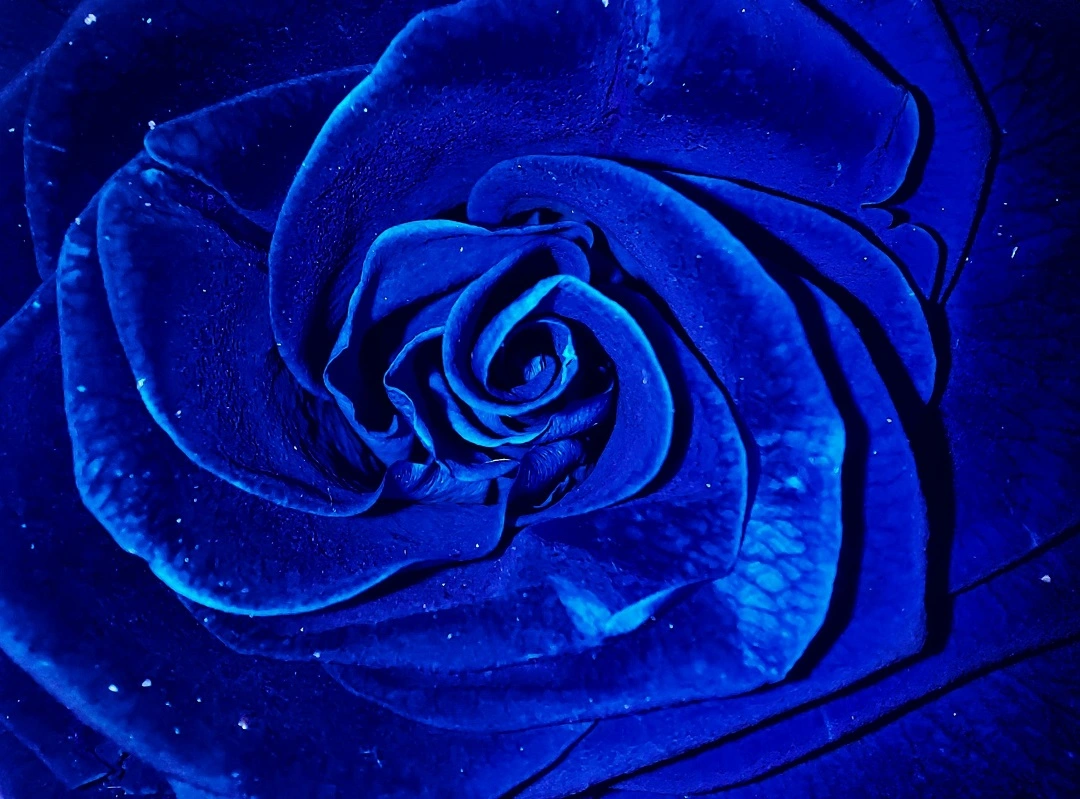Blue roses have long captivated the imagination, evoking mystery and allure. Unlike their red or white counterparts, these enchanting blooms do not occur naturally in nature. Their striking hue symbolizes an unattainable desire, making them a coveted treasure among flower enthusiasts and collectors alike.
But what is it about blue roses that makes them so special? From their intriguing history to the science behind their creation, these flowers hold stories waiting to be explored. Join us as we delve into the world of blue roses—the rarest and most sought-after flowers on Earth—and uncover what truly makes them stand out in any garden or bouquet.
The History and Origin of Blue Roses
Blue roses have long captured the human imagination. They are not found in nature, making their existence a mystery that dates back centuries. Ancient cultures sought to create them, inspired by legends and tales of unattainable beauty.
The search for blue roses gained momentum during the 19th century. Artists and poets often depicted these elusive flowers as symbols of love and longing. Their rarity added layers of intrigue to their allure.
In Japan, blue roses hold particular significance in folklore. They represent dreams fulfilled or wishes granted, reflecting a quest for something beyond reach.
Despite countless attempts at cultivation through selective breeding, true blue roses remained elusive until recent advancements in science emerged, allowing horticulturists to explore genetic manipulation techniques that may finally bring this dream flower closer to reality.
The Science behind Blue Roses
Blue roses do not occur naturally due to a specific lack of the pigment delphinidin. This pigment is responsible for creating blue hues in many flowers, but it is absent in traditional rose species.
To achieve that elusive blue color, scientists have turned to genetic engineering. By introducing certain genes from plants known to produce delphinidin, researchers have attempted to create genetically modified roses with shades reminiscent of blue.
Another approach involves altering the pH levels within the flower’s petals. When combined with other natural pigments, this method can sometimes result in a bluish tint.
While these scientific endeavors are fascinating, they highlight nature’s limitations and humanity’s creative drive. The quest for true blue roses captivates botanists and flower enthusiasts alike, symbolizing both beauty and technological innovation in horticulture.
Symbolism and Meaning of Blue Roses
Blue roses evoke a sense of mystery and intrigue. Their unique hue makes them stand out, symbolizing the unattainable or the impossible.
In many cultures, blue roses represent desires that cannot be fulfilled. They convey feelings of longing and hope for something just out of reach. This quality has made them popular in literature and art, often depicted as elusive treasures.
Additionally, blue roses can signify uniqueness and individuality. They are not naturally occurring in nature, which adds to their charm. People often associate these flowers with creativity and imagination.
In relationships, gifting blue roses can express deep admiration or love that transcends ordinary boundaries. It’s a gesture filled with significance—suggesting an appreciation for someone who is truly one-of-a-kind.
Why Blue Roses are Considered the Rarest Flower in the World
Blue roses are often deemed the rarest flowers in the world due to their unnatural hue. Unlike traditional rose colors, blue does not exist naturally in the species. This absence makes them uniquely sought after.
Their allure is compounded by numerous myths and legends surrounding them. People associate blue roses with mystery, unattainability, and even the impossible. They symbolize a longing for something that cannot be achieved or possessed.
Moreover, horticulturists have struggled for decades to create true blue roses through various breeding techniques and genetic manipulation. This ongoing quest adds an element of intrigue to their rarity.
As a result, when someone encounters genuine blue roses — whether in gardens or floral shops — it feels like discovering treasure amidst ordinary blooms. Their scarcity elevates their value and desirability among flower enthusiasts worldwide.
Cultivation and Availability of Blue Roses
Cultivating blue roses is a challenging endeavor. Their unique coloration comes from genetic manipulation, as true blue pigments do not exist in nature. This complexity makes them rare.
Gardeners typically rely on specific hybrids, often crossing white or pink varieties with purple ones to create shades that resemble blue. These blooms require precise conditions for optimal growth, including well-drained soil and consistent moisture.
Availability can be limited due to the intricate breeding process. They are most commonly found at specialty nurseries or during certain seasons in florists’ shops.
Demand for blue roses remains high despite their scarcity. Enthusiasts and collectors eagerly seek them out for special occasions or as striking ornamental plants.
As interest grows, more growers are experimenting with innovative techniques to increase supply while maintaining quality and color consistency.
Alternative Methods to Create Blue Roses
Creating blue roses has intrigued horticulturists and flower enthusiasts for years. While true blue roses do not exist naturally, several alternative methods have been explored to bring this dream to life.
One popular approach involves dyeing white roses with special floral dyes. This method allows for a range of shades from light lavender to deep azure. It’s an easy way to achieve vibrant colors without altering the plant’s genetics.
Another innovative technique is genetic engineering. Scientists have experimented with gene manipulation to introduce traits from other plants that produce blue pigments, like certain orchids or pansies.
Additionally, hybridization can play a role in developing new rose varieties that lean towards bluish hues. By cross-breeding different species, growers seek out unique color combinations and enhance their chances of achieving a more desirable shade.
Each of these methods reflects humanity’s desire for beauty beyond nature’s offerings. The quest continues as technology advances and creativity flourishes in horticulture.
The Future of Blue Rose Horticulture
The future of blue rose horticulture is filled with possibilities. As technology advances, genetic engineering may unlock new methods for breeding these elusive blooms. Scientists are exploring ways to manipulate the genes responsible for color in roses. This could lead to a true blue hue that captures the imagination.
Moreover, sustainable practices are becoming more prevalent. Growers are focusing on eco-friendly techniques that minimize environmental impact while maximizing flower quality.
Innovation doesn’t stop at genetics; it extends into cultivation techniques as well. Vertical farming and hydroponics might offer ideal conditions for growing blue roses year-round.
Consumer interest continues to rise, pushing florists and growers to experiment further with this rare flower variety. The allure of blue roses will drive demand, inspiring new creations and hybridization efforts in the years ahead.
As research progresses, each bloom brings us closer to realizing the dream of consistent production of genuine blue roses.
Advancements in Blue Rose Cultivation
Recent advancements in blue rose cultivation have sparked excitement among horticulturists and flower enthusiasts. Scientists are employing cutting-edge genetic techniques to enhance the pigmentation of roses, pushing boundaries that were once thought impossible.
One approach includes the use of CRISPR technology. This revolutionary gene-editing tool allows researchers to modify specific genes responsible for color expression, leading to vibrant azure hues. Such innovations promise an array of beautiful shades previously unseen in nature.
Additionally, hybridization methods continue to evolve. Breeders experiment with various rose species, cross-pollinating them in creative ways. These efforts aim not only for stunning colors but also for plants that thrive in diverse climates.
As a result, the future looks promising for those who dream of cultivating this elusive flower. With ongoing research and development, the magical allure of blue roses may soon be within reach for gardeners around the world.
The Cultural Significance of the Blue Rose
Blue roses weave an enchanting narrative across cultures. They have long been symbols of the unattainable, representing dreams that elude grasp. This allure has made them a powerful motif in literature and art.
In many societies, blue roses signify mystery and intrigue. Their unique hue stands apart from traditional rose colors, sparking curiosity and inspiring creativity. Artists often use these roses to convey complex emotions or themes of longing.
Moreover, they hold a special place in folklore. Various legends depict them as rare gifts from nature or mystical entities offering hope. In these stories, the blue rose embodies resilience against adversity.
Modern culture continues to embrace this captivating flower. From fashion runways to wedding themes, their presence adds an element of sophistication and charm. The cultural significance remains vibrant as people seek out these extraordinary blooms for celebrations and expressions of love.
The Symbolism and Significance of Azure Blooms
Azure blooms, particularly blue roses, evoke deep emotions and meanings. Their striking color often represents mystery and the unattainable. Unlike traditional roses that symbolize love or passion, azure hues suggest something more elusive.
These flowers can embody a sense of hope and aspiration. They remind us of dreams yet to be realized. The rarity of blue roses accentuates this symbolism; they are seen as treasures in a world filled with commonality.
In various cultures, azure blooms have been linked to spirituality and intuition. They encourage individuals to seek deeper connections within themselves and others.
The unique beauty of these flowers captures attention instantly. Azure blooms serve as a reminder that even amidst life’s challenges, there is still elegance in seeking the extraordinary. This allure continues to inspire artists, poets, and romantics alike throughout history.
The Quest for the Blue Rose
The quest for the blue rose has captivated horticulturists and dreamers alike for centuries. This elusive flower, with its enchanting hue, represents mystery and desire.
Legends abound around its origins. Many believe it symbolizes unattainable love or a longing that can never be fulfilled. Its absence in nature only enhances this allure.
Countless attempts have been made to create a true blue rose through breeding techniques and genetic modifications. Each effort reflects humanity’s eternal hope to achieve the impossible.
From ancient tales to modern science, the journey continues as researchers explore new methods of cultivation. Genetic engineering holds promise but raises ethical questions about altering nature’s design.
As we chase this mythical bloom, we uncover not just a flower but our own aspirations and dreams entwined with beauty itself.
Conclusion: The Timeless Beauty and Appeal of Blue Roses
They have captured the imagination and hearts of many throughout history. Their enchanting hue, rarity, and unique symbolism make them a flower unlike any other. From their intriguing origins to the scientific advancements that attempt to create them, blue roses continue to be a subject of fascination.
Culturally significant across various societies, these blooms represent mystery, love that is unattainable, and the pursuit of dreams. People are drawn to their beauty for reasons as diverse as personal sentiment or artistic inspiration. The quest for blue roses reflects humanity’s desire for something extraordinary something that transcends nature itself.
As horticultural techniques evolve and genetic engineering progresses, the dream of cultivating true these roses may soon become reality. Whether through traditional breeding methods or innovative science, there seems to be an unwavering commitment towards achieving this goal.
The timeless allure of blue roses remains strong in art and literature alike; they symbolize hope amid adversity. As we explore their significance further into the future, one thing is certain: blue roses will always hold a special place in our hearts—a beautiful reminder of life’s mysteries waiting to bloom.

